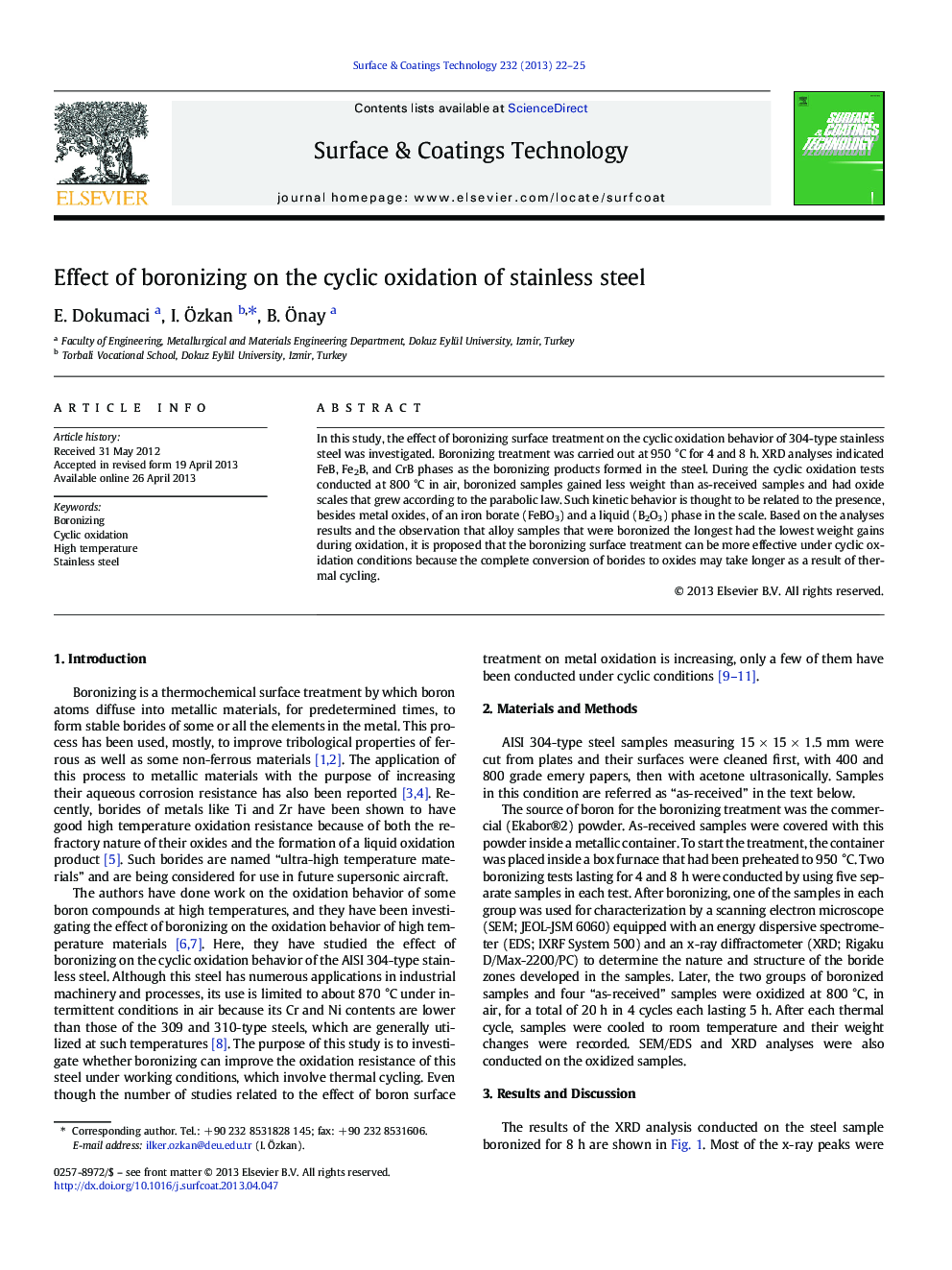| Article ID | Journal | Published Year | Pages | File Type |
|---|---|---|---|---|
| 8029414 | Surface and Coatings Technology | 2013 | 4 Pages |
Abstract
In this study, the effect of boronizing surface treatment on the cyclic oxidation behavior of 304-type stainless steel was investigated. Boronizing treatment was carried out at 950 °C for 4 and 8 h. XRD analyses indicated FeB, Fe2B, and CrB phases as the boronizing products formed in the steel. During the cyclic oxidation tests conducted at 800 °C in air, boronized samples gained less weight than as-received samples and had oxide scales that grew according to the parabolic law. Such kinetic behavior is thought to be related to the presence, besides metal oxides, of an iron borate (FeBO3) and a liquid (B2O3) phase in the scale. Based on the analyses results and the observation that alloy samples that were boronized the longest had the lowest weight gains during oxidation, it is proposed that the boronizing surface treatment can be more effective under cyclic oxidation conditions because the complete conversion of borides to oxides may take longer as a result of thermal cycling.
Related Topics
Physical Sciences and Engineering
Materials Science
Nanotechnology
Authors
E. Dokumaci, I. Ãzkan, B. Ãnay,
